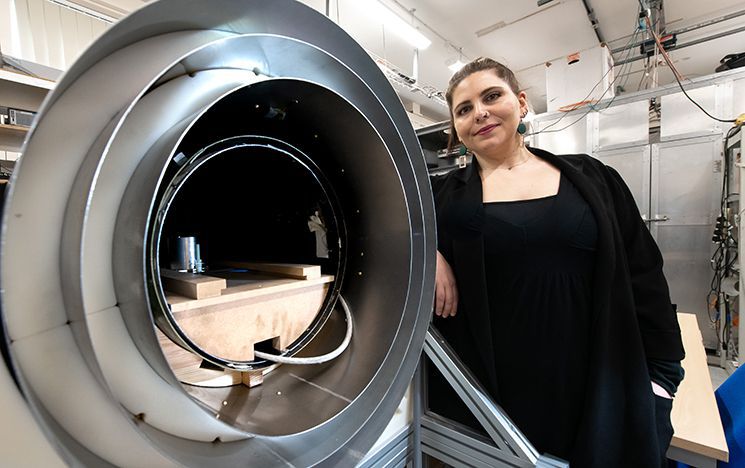Sensors for bio-medical imaging

We are building modular quantum sensors and using them to record signals in the human brain. We apply the ultra sensitive quantum sensors to outside of a participant’s scalp, close to the visual cortex of the brain. We then record the magnetic fields which show the neural activity when participants opens and close their eyes for example. We are working towards whole-brain scanning using quantum technology, effecting potential advances for neurodegenerative diseases like Alzheimer's.
We are using the magnetic sensors for brain diagnostics. Our sensing systems will be complementary to and in aspects better than conventional MRI or MEG scanners. Key advantages are complete non-invasiveness of the technology, better time resolution combined with good spatial resolution, flexibility in allowing subjects/patients to move and ability to place sensors away from the brain, e.g. to measure spinal cord signals and signal propagation speeds, which would give new insights into motoneuron diseases for example.
Quantum sensors based on the Larmor spin precession of optically-pumped atoms in room-temperature alkali vapour cells are currently the most sensitive magnetometers available. These optically-pumped magnetometers (OPMs) have been shown to operate with magnetic field sensitivities of below 1 fT per √Hz - even better than conventional superconducting SQUID systems.
In collaboration with the Clinical Imaging Sciences Centre (CISC), we are investigating ways in which to use such sensors to perform magnetoencephalography (MEG) - a sophisticated tool that yields rich information on the spatial, spectral and temporal signatures of human brain function. However, since the magnetic fields produced by the brain are so weak (and reduce strongly with increasing distance), current MEG techniques are limited in the signal-to-noise ratio and spatial resolution that can be obtained.
Recent work suggests that OPMs might be a viable alternative to superconducting detectors for MEG measurement. It is possible to bring the sensors to within a few millimetres of the scalp (in contrast to several centimetres), thus promising increased sensitivity compared to traditional SQUID systems. Operation at room-temperature also alleviates the need for any cryogenic cooling, which typically requires liquid helium that is costly and in short supply environmentally.
In addition to the high signal-to-noise offered by OPMs, their flexibility in terms of positioning of the sensors around the head could drastically improve studies of brain activity in infants - subjects who are currently measured using ill-fitting enclosures designed for adults.